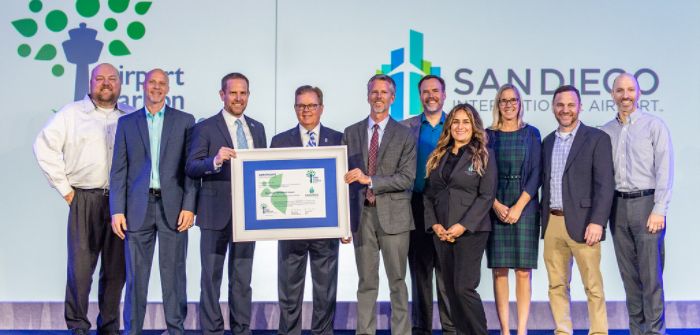California’s San Diego International Airport has become only the second carbon neutral airport in the USA, joining Dallas Fort Worth International Airport in Texas.
San Diego has been certified at Level 3+, the highest level of certification in Airports Council International’s Airport Carbon Accreditation (ACA) program, a framework that helps airports identify, manage and reduce their carbon emissions.
Having reached Level 3 ACA program in 2018, the Airport Authority has since worked closely with its carbon-offset program, ‘The Good Traveler’, to off-set any remaining direct carbon emissions. By doing so, the airport met the final criteria required to reach Level 3+ Carbon Neutrality.
“Reaching carbon neutrality has long been a goal for the Airport Authority, one we have been committed to and striding toward year after year,” said Kim Becker, SAN’s president/CEO.
“We knew we could do more to operate more efficiently. This accreditation is testament to not only the efforts of the Airport Authority, but also those of our regional stakeholders and airport business partners in doing their part in minimizing the airport’s carbon footprint.”
Level 3+ certification signifies that the airport is successfully: completing annual carbon emission inventories (which are third-party verified); continuing to reduce carbon emissions under the Airport Authority’s direct control on a year-on-year basis; offsetting any residual emissions under the Airport Authority’s direct control (namely, from fuel used in fleets and generators, purchased electricity and staff business travel); and effectively engaging with airlines, ground transportation operators, and other business partners to help them reduce their on-site carbon emissions.
Examples of the airport’s initiatives to reach carbon neutrality include: creating a greenhouse gas reduction program for rideshare companies such as Lyft and Uber; launching The Good Traveler program that has since expanded nationally to 14 partner airports; and partnering with San Diego Gas & Electric to expand airport charging infrastructure for airport employees and electric-powered airside ground service equipment.


